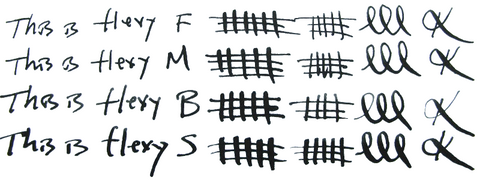Danitrio Butterfly Maki-E on Takumi Fountain Pen
Starting at $300/mo for 6 month no-interest installments, 10% down using 
Learn about our Payment Relief Plan. |
|---|
✓ 100% Genuine Urushi
✓ Contains the Maki-E Red Seal (Highest Quality of Maki-E Art)
✓ Hand-painted by highly-trained Japanese Artisans
This beautiful masterpiece is based on a folktale of a couple who loved each other but due to their circumstances, they could not be together in life. When they died, they were reborn as butterflies to be together forever.
In Japan, butterflies are a symbol of marriage and longevity.
This pen features a intricate artwork depicting butterflies and their decorative wings. The pen clip is painted with nashiji-nuri-style which is inspired by the skin texture of the Japanese Asian pear.
About Danitrio Takumi Fountain Pen Series:
The Takumi is Danitrio series pen that is cigar-shaped. Takumi means "good design or craft" in Japanese.
Nib Details:

This pen is furnished with an 18k Gold, two-toned #6 nib. What has been described by many Danitrio collectors as the fireball nib is an image of “Kaen-Kohai” which is a flame-shaped halo of “Fudo Myoo” (Acala, the God of Fire). This halo is commonly painted on the back of Japanese Buddhist statues.
An UrushiPen.com representative will contact you to confirm nib tip size preference (fine, medium, broad, or stub) following the placement of the order.

Technical Specification:
| Cap Length | 68 mm (2.68") |
| Cap Diameter | 18 mm (0.71") |
| Barrel Length | 107 mm (4.21") |
| Barrel Diameter | 16 mm (0.63") |
| Pen Length (Closed) | 147 mm (5.79") |
| Pen Length (Posted) | Cap does not post |
| Net Weight | 28.4 g (1 oz) |
| Net Weight (w/ink full) | 30 g (1.06 oz) |
| Filling System | Cartridge/Converter |
About the Artisan:

This pen was hand-painted by Hironobu Okazaki (Hironobu). Born 1984. One of the youngest of Danitrio's artisans. His father is the renown Maki-E artisan Koichiro Okazaki (Kogaku). Hironobu is considered third generation of Maki-E artisan in his family. Hironobu was inspired by his father and continued to uphold his family's traditions of studying the art of Maki-E. He entered into Wajima Urushi Crafts Center for 3 years. He paints Maki-E now with his parents and his wife.





